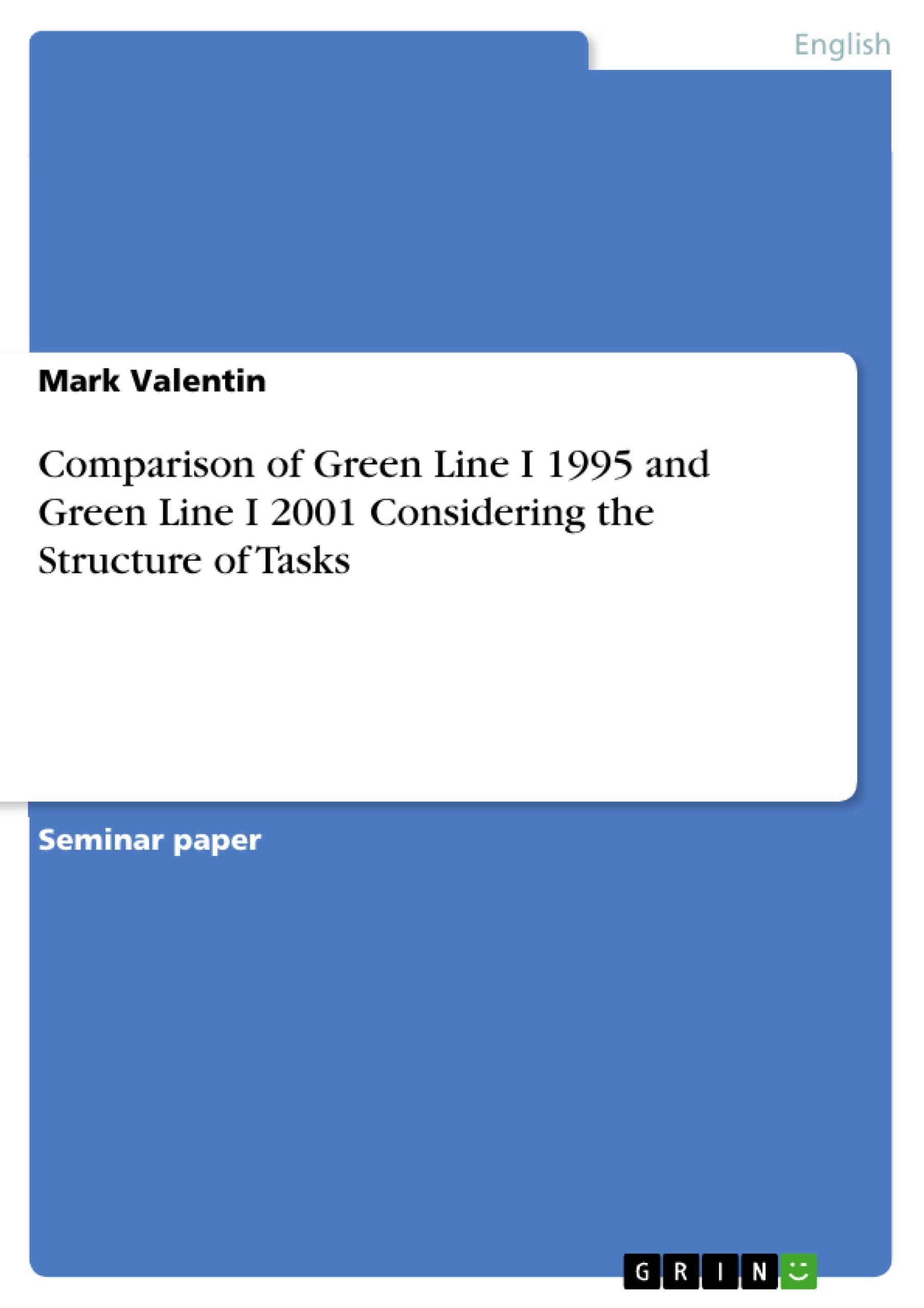Schoolbook analysis as a field of research opens a wide range of perspectives worth taking a closer look at. Even though, noticing the current discourse leads to an astounding conclusion: Considering schoolbooks as one major and significant instrument of school life, the amount of research carried out on this topic is rather insubstantial. Noting that there is a wide range of different contemporary schoolbooks in use, the question arises, in how far there can be a justification for this variety. Does the ‘perfect schoolbook’ exist? Are some books of higher quality than others? Are significant differences a matter of perspective? And – in that case – are there any criteria which reinforce a certain perspective? The research on differences between commonly used schoolbooks may be distracting as it is always accompanied by a certain degree of subjectivity. Even if there are several criteria pleading for one schoolbook or another, it is up to the college of each school to decide on a concrete way of teaching, about which the author does not want to judge within a short paper like this. This attitude shall be exemplified briefly, and since the character of tasks partly resembles the character of language testing methods , an excursion on testing theory may be appropriate in order to achieve this goal.
Commenting on testing methods, Gabel states that in “fact there is no best test or best technique. A test which proves ideal for one purpose maybe quite useless for another; a technique which may work very well in one situation can be entirely inappropriate in another” (Gabel [a], P.1.). Transferring this statement to the task structure of different schoolbooks, it becomes clear that while some books serve one purpose, others serve a different one.
This paper avoids examining differences between schoolbooks that evolve from different didactic accentuations. The author tries to exclude this variable by comparing two schoolbooks of the same series (Green Line I 1995/2001). Such an investigation offers the chance to take a closer look at possible didactic developments within the history of one single schoolbook series.
Inhaltsverzeichnis (Table of Contents)
- I. Introduction
- II. Methodological Approach
- III. Investigation
- III.1 Categories of tasks and their occurrence in Green Line I (1995, 2001)
- III.2 Interpretation
- IV. Conclusion
Zielsetzung und Themenschwerpunkte (Objectives and Key Themes)
This paper focuses on comparing two editions of the same schoolbook series, Green Line I, published in 1995 and 2001, in order to analyze the evolution of task structure over time. It seeks to identify and interpret potential didactic explanations for any observed differences. This analysis aims to contribute to the understanding of how schoolbooks, as key instruments of education, evolve and adapt to changing learning needs and pedagogical approaches.
- Evolution of task structure in schoolbooks
- Didactic changes in textbook design and content
- The role of tasks in language learning and assessment
- Comparison of quantitative and qualitative task categories
- Interpreting task differences in the context of didactic research
Zusammenfassung der Kapitel (Chapter Summaries)
The introduction establishes the context of the paper, highlighting the need for research on schoolbooks despite their significance in education. It introduces the Green Line I series and outlines the research question: How does the task structure differ between the 1995 and 2001 editions, and what are the potential didactic explanations for these differences?
The methodological approach section outlines the process of data collection and analysis. It involves examining both editions page by page, identifying and classifying the tasks included, and then analyzing the quantitative and qualitative differences in their occurrence.
Chapter III.1 presents the results of the analysis, comparing the categories of tasks found in both editions. It includes a detailed list of the tasks and their respective page numbers. This chapter provides a clear picture of the empirical data collected.
Schlüsselwörter (Keywords)
This study focuses on the analysis of schoolbooks, specifically the Green Line I series, with a focus on the evolution of task structure. Key themes include didactic changes in textbook design and content, the role of tasks in language learning and assessment, and the interpretation of differences in the context of didactic research. The study employs a quantitative and qualitative analysis of task categories and their occurrence in both editions, aiming to provide valuable insights into the changing nature of schoolbooks and their potential implications for language learning.
- Quote paper
- B.A. Mark Valentin (Author), 2010, Comparison of Green Line I 1995 and Green Line I 2001 Considering the Structure of Tasks, Munich, GRIN Verlag, https://www.grin.com/document/167978




